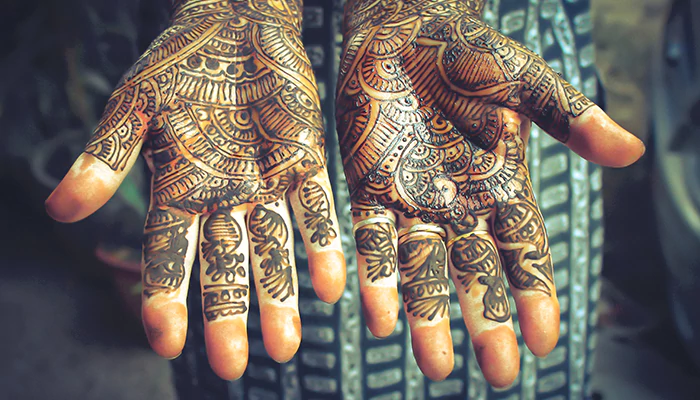Henna and Kohl: Deep-Rooted Traditions in Middle Eastern Bridal Makeup
The use of two elements is at the very center of this ancient practice: henna and kohl.
- shriparna
- 20 March, 2025
- 2 mins ago

Henna and Kohl: Deep-Rooted Traditions in Middle Eastern Bridal Makeup
The use of two elements is at the very center of this ancient practice: henna and kohl.
Bridal makeup in the Middle East represents the epitome of a combination of tradition, culture, and beauty, cultivated over centuries. More than mere adornments, these traditional cosmetics like henna and kohl play important symbolic and cultural roles, thereby connecting contemporary weddings with the robust history of the region.
The Ancient Art of Henna
Henna, a paste made out of the powdered leaves of Lawsonia inermis, has been used for thousands of years throughout the Middle East, North Africa, and South Asia. The origins of henna go back to ancient Egypt, where it was used both for cosmetic and medicinal purposes. In the context of weddings, henna plays a central role by symbolizing joy, beauty, and protection.
The application of henna, also known as "mehndi" in some cultures, is a complicated process because it involves detailed designs on the bride's hands and feet. It usually happens on the eve of the wedding, wherein the family gathers together in a joyous celebration called the Henna Night. Up until today, such activity serves as an avenue for festivity, singing, and an act of getting together of the ladies in the house.
The designs of henna are not merely ornamental; they are fraught with hidden meanings. Flowers are for joy, while vines denote longevity and peacocks signify beauty. It is believed that the deeper the stain colour, the more prosperous the marriage is held to be, thereby making it a most expected and joyous wait for the bride.

Kohl: The Eye of Tradition
Kohl, a dark powder usually ground from stibnite or galena, has been an integral part of Middle Eastern cultures for thousands of years. Known to ancient texts as "kajal" or "surma," kohl was more than a cosmetic; it was believed to protect against evil eye and harsh desert sun. Its application enhances the eyes, creating a dramatic and striking look that has become synonymous with Middle Eastern beauty.
To the bride, kohl symbolizes a certain aspect of allure and mystique. Kohl outlines the eyes, bringing out the shape of the eyes and making them larger and more expressive. This application has become such an important part of a bridal makeup that it gives the bride a timeless, classic touch.
Kohl has also been linked to medicinal benefits; it was used historically to soothe the eyes and protect against infections. While modern kohl formulations are safer and more refined, the cultural and historical significance of this ancient cosmetic remains strong.
Blending Tradition with Modernity
Today, Middle Eastern bridal makeup is a fusion of the old and new. While the use of henna and kohl continues, brides often blend these ancient traditions with contemporary makeup techniques to achieve a look that is both culturally significant and fashion-forward. Henna designs have evolved, incorporating modern twists while staying true to their roots, and kohl is now often paired with eyeshadows, liners, and mascaras for a more polished finish.
Makeup artists specialized in Middle Eastern brides know exactly how to balance tradition with the latest trends, thus reflecting a beautiful visual, acknowledging one's heritage, while yet reflecting the style of a bride. This chorus of tradition and innovation is a testament to the enduring appeal of henna and kohl in bridal beauty rituals.
A Celebration of Heritage and Beauty
Henna and kohl are not just makeup; they are part of the heritage that is deeply mounted into the fabric of Middle Eastern weddings. Protectors, beautiful, joyful, connecting the modern bride to her ancestors, adding the depth and meaning a celebration deserves. With each swirl of henna and stroke of kohl, timeless beauty shines in Middle Eastern bridal traditions.










